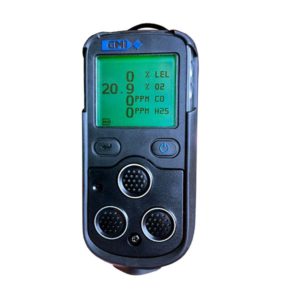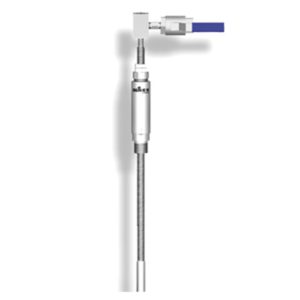Chemical
The production, storage, and distribution of products and byproducts within the chemical industry are some of the most dangerous to those who work with them directly.
The contribution of gas detection management in the chemical industry plays an imperative role.
Where Are Our Products Used?
Application: Production
Personal Safety
Personal gas detectors are a must, but continuous monitoring for LELs can alert you to a problem 24/7. Area monitors are great for setting up a perimeter around a hazardous area.
Protective respirators should be worn under welding masks to protect against nuisance odours and particulates.
Application: Pipelines
Sample Extraction
Extraction probes can be directly inserted into a pipeline for the purpose of separating unwanted liquid and particulate from the gas sample at flowing temperature and pressure conditions.
Application: Chemical Storage
Maintaining the integrity of storage facilities is paramount. Early warning of any leak improves the safety of the facility and those living or working around it. When detected at an early stage, countermeasures can be initiated to protect personnel, workplaces, and equipment.
Gas detection systems are installed to focus on flanges and any potential weak points where leaks may occur. These systems can give local alerts as well as taking executive action to adapt gas flow and storage rates.
Maintenance
Any maintenance works carried out which involve welding and soldering should be covered under a hot work permit and require the use of area and personal detectors to maintain a safe working atmosphere. In this environment, you need a reliable warning and protection system. Respiratory protective filters can also be worn under welding masks to protect against nuisance odours and particulates.
Confined Space
Upon entering storage tanks for inspection or cleaning, workers are required under the Confined Space Regs to carry out pre-entry checks. Pumped gas detectors with sample lines are inserted into the tank to check toxic and flammable gas measurements ensuring that these are a safe level prior to entry.
Gases such as Nitrogen and Sulphur could be present at any time. Combined and in enclosed spaces, these gases pose much more of a threat than they would individually.
Once inside a tank, gas detectors are clipped to the workers overalls to continuously monitor gas levels. Area monitors are positioned to measure for gas levels beyond the personal gas detector sampling zone.
Purging & Venting
Site permits may require tank entry to check if purging or venting is incomplete and requires examination. Tank entry should be treated as confined space entry. Decomposition, residue, or product left in tanks could still pose a risk of suffocation or explosion if gases haven’t yet been removed.
Most petrochemical sites use detector tubes because they provide a low-cost method of sampling individual VOCs compared to PID technology that gives a total reading.
Where ladder access is unavailable, a davit or tripod access system is required to get people in and out safely as part of a rescue plan. Atmospheric testing requires a 4-gas detector to warn against the threat of toxic and combustible gases. Supplied air systems should always be on standby.
Case Study – Gas Detectors in Storage Towers Boost Safety
a1-cbiss were approached by a large chemical company to supply up to 700 personal four gas detectors to various sites as part of a multi-national project. The gas detectors would be used to protect workers carrying out maintenance within power stations and petrochemical towers.
Talk with the Experts
Contact us - Our team of application specialists can assist you with system design, installation, maintenance, and repair. As a systems integrator, we provide end-to-end support to ensure your facility has a reliable and effective gas detection system in place.
Sign up for more information - For more information on protecting your staff from the dangers of gas leaks, sign up for our emails.




